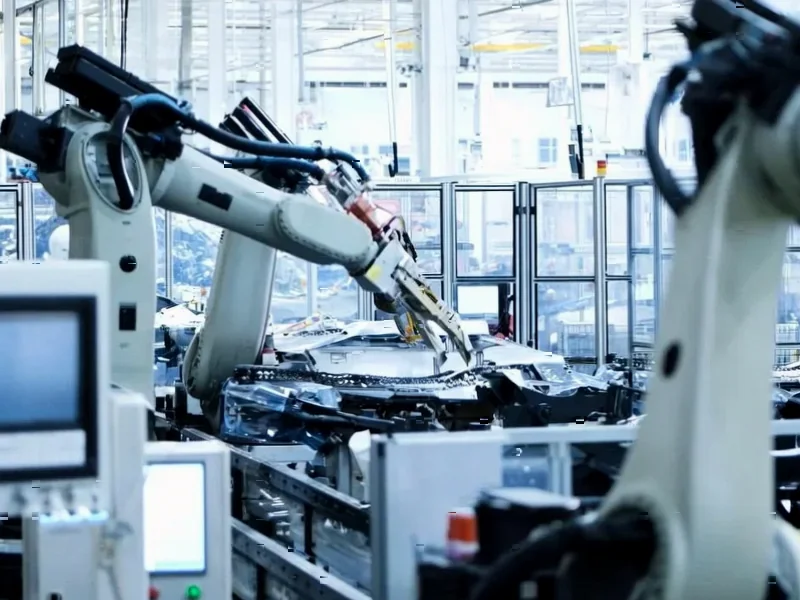According to Supply Chain Dive, tariffs, sanctions, and shifting trade policies have become persistent realities in 2025 global commerce, with companies preparing for continued volatility into 2026 amid new port fees, retaliatory measures, and upcoming USMCA reviews. The most resilient supply chains are being engineered for uncertainty rather than pure efficiency, with companies shifting from single-lane dependencies to building redundancy across multiple ports, blending domestic and cross-border sourcing, and maintaining alternate routing strategies. The “China + 1” strategy has evolved into “China + Mexico + U.S.” approaches as manufacturers deepen cross-border integration ahead of the 2026 USMCA review period. Companies are leveraging multimodal networks and real-time transportation management systems to turn reactive decisions into proactive intelligence as they prepare for ongoing policy shifts.
From Lean to Anti-Fragile Supply Chain Architecture
The fundamental paradigm shift happening in supply chain design represents a move from JIT (Just-in-Time) to JIC (Just-in-Case) principles at an architectural level. Where traditional supply chains were optimized for cost efficiency through single-sourcing and minimal inventory buffers, modern resilient networks incorporate deliberate redundancy and diversification. This isn’t simply adding backup suppliers—it’s about designing systems where multiple pathways can operate simultaneously without significant cost penalties. The technical challenge lies in creating this optionality without destroying the economic advantages that made global supply chains viable in the first place. Companies are solving this through distributed port strategies and multimodal transport networks that maintain service levels while spreading risk.
The Real-Time Intelligence Infrastructure
Modern transportation management systems have evolved from tracking tools to predictive risk mitigation platforms. The most advanced TMS platforms now incorporate tariff databases, customs regulation updates, and port congestion analytics directly into routing decisions. When real-time visibility systems detect potential disruptions, they can automatically trigger contingency plans that were previously manual processes. The technical sophistication required involves integrating customs declaration systems, carrier scheduling APIs, and inventory management platforms into a unified decision engine. This creates what I call “digital twins” of physical supply chains—virtual models that can simulate policy changes and their impacts before committing to routing decisions.
The Technical Realities of Nearshoring
While the strategic shift toward regional manufacturing makes sense politically, the implementation presents significant technical hurdles. Establishing regional distribution networks requires rebuilding supplier ecosystems that took decades to develop in Asia. The manufacturing expertise, tooling availability, and component sourcing that made Chinese production efficient don’t automatically transfer to Mexico or other nearshoring locations. Companies are discovering they need to invest in knowledge transfer, local workforce development, and sometimes entire industrial clusters to make regionalization viable. The evolved China + Mexico + U.S. strategy works precisely because it acknowledges that complete decoupling isn’t feasible—instead creating complementary manufacturing capabilities across regions.
The Engineering Behind Seamless Mode Switching
True supply chain resilience requires technical integration across transportation modes that have traditionally operated in silos. The ability to seamlessly shift containers from ocean to rail to truck—or to expedited air freight when necessary—demands standardized data protocols and unified operational control. The most advanced logistics providers are building what amounts to transportation orchestration platforms that can dynamically reroute shipments based on changing conditions. This goes beyond traditional freight forwarding to create intelligent systems that understand the cost-service tradeoffs of each modal shift and can execute them without human intervention when speed is critical.
Calculating the Resilience Premium
The elephant in the room remains cost—building optionality and redundancy inherently increases supply chain expenses. However, companies are beginning to quantify what I call the “resilience premium” differently. Instead of viewing these costs as inefficiencies, forward-thinking organizations are calculating the value of business continuity during disruptions. When a tariff surge or port closure would previously halt production for weeks, the ability to maintain operations through alternative routes represents tangible financial value. Advanced cost management tools now help companies model these tradeoffs, showing that what appears as higher operational costs may actually represent lower risk-adjusted total cost when business interruption is factored in.
Building for the Next Decade of Uncertainty
The supply chain infrastructure being built today must anticipate policy environments we can’t yet predict. This requires designing portside operations and distribution networks with maximum configurability. The most resilient facilities incorporate cross-docking capabilities, transload operations, and flexible storage configurations that can adapt to changing trade patterns. More importantly, they’re connected through digital threads that allow inventory to be dynamically allocated across the network based on emerging risks. As companies look toward 2026 and beyond, the winning strategy isn’t predicting the next policy shift—it’s building systems so adaptable that policy changes become manageable variables rather than existential threats.




